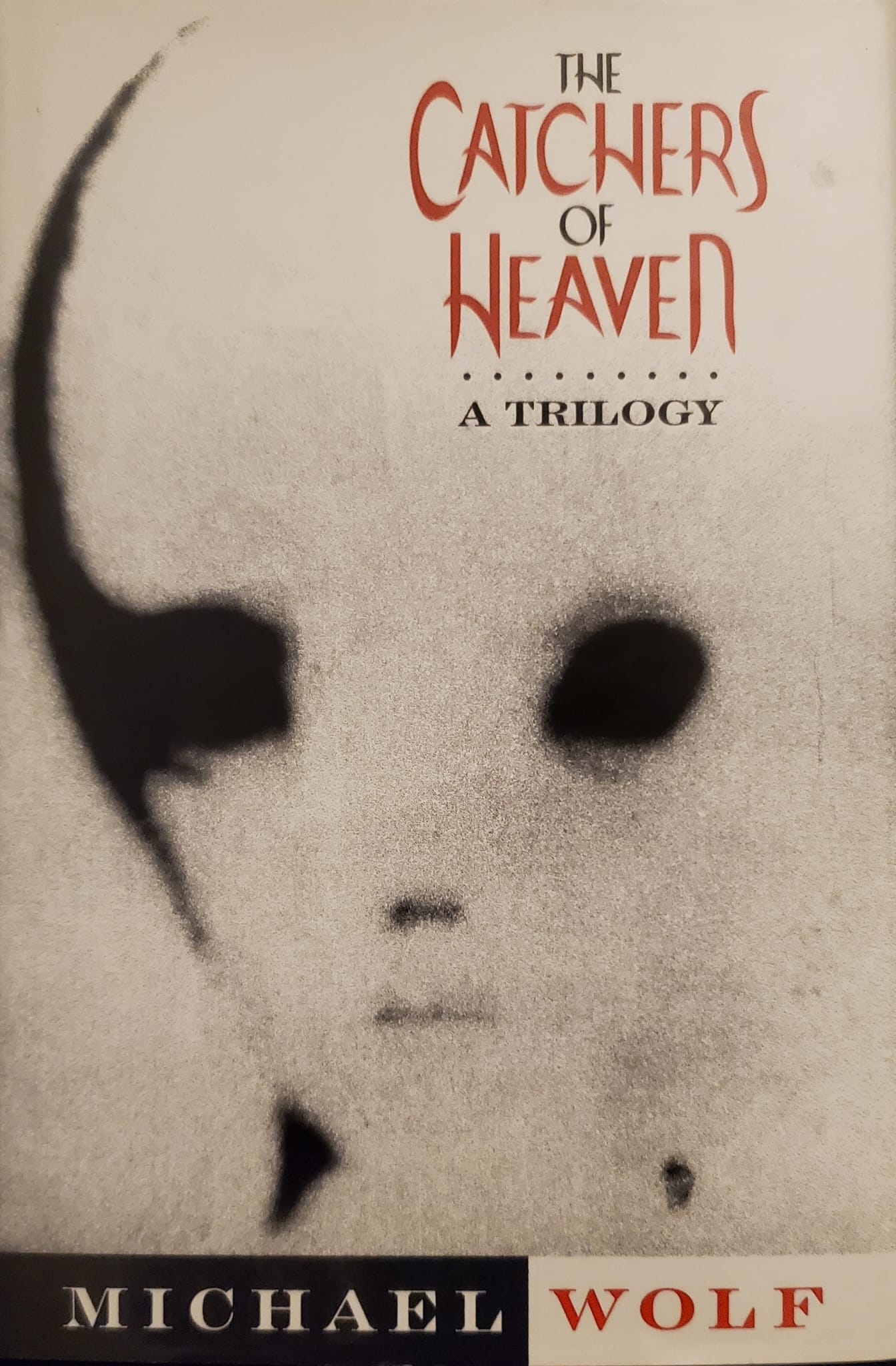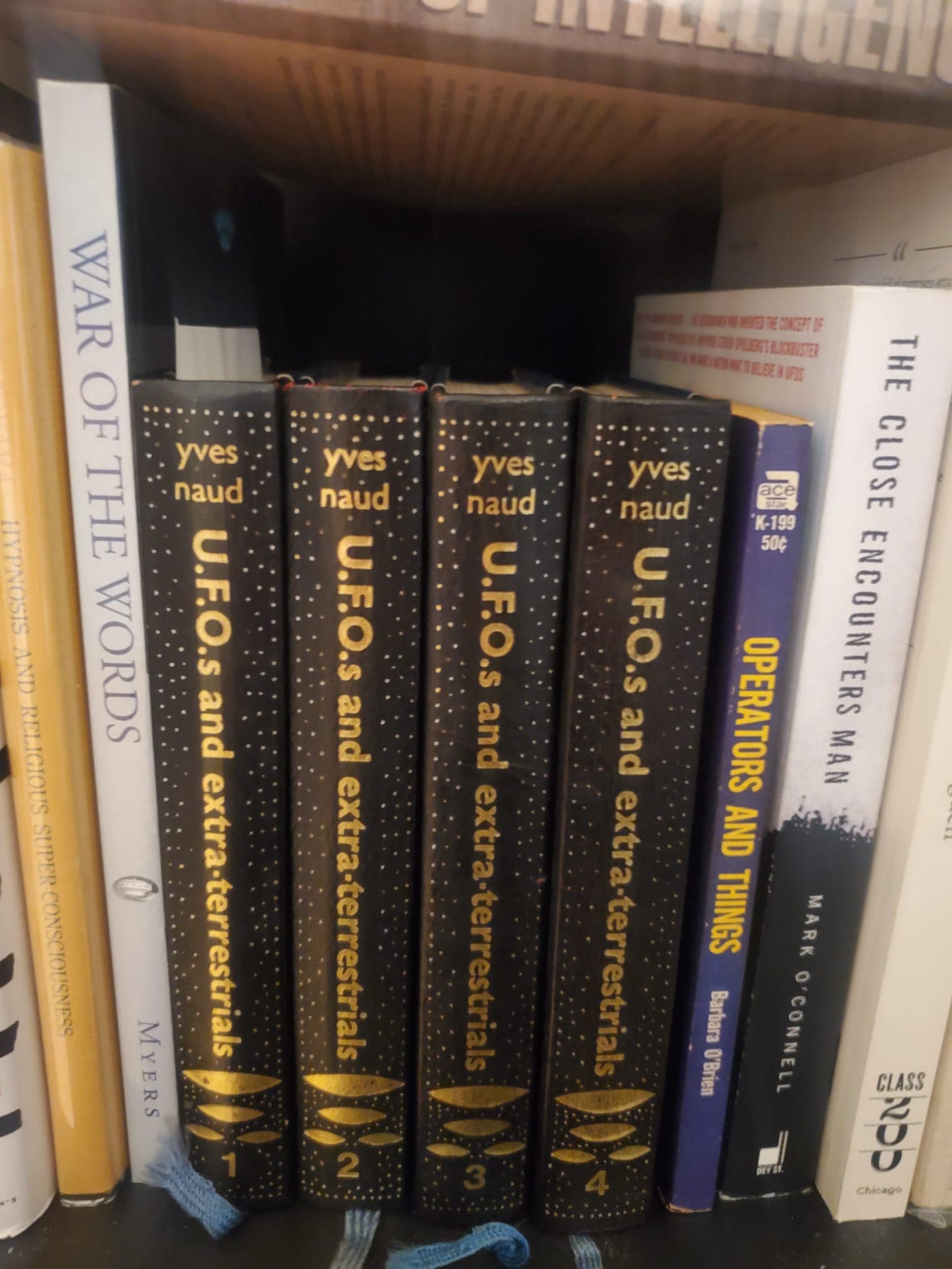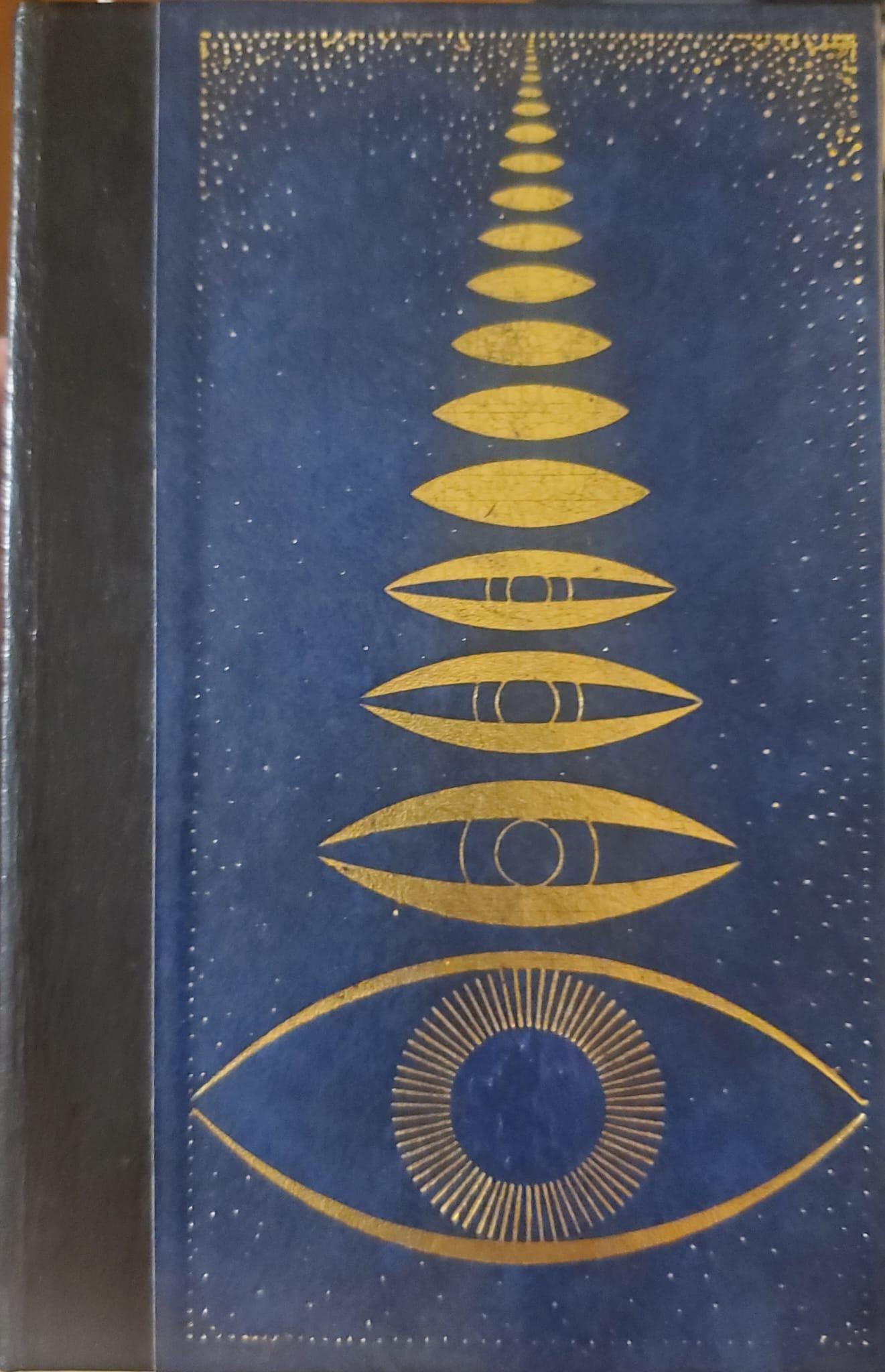Cystic Detective Update #5
A company town in the jungle, Cleveland Rocks, strange UFO tomes, that one Wall Street Journal article, and other recent reads, thoughts, & happenings
Find other Cystic Detective Updates in the Table of Discontents.
A platinum cube clanging around one of his stale synapses, Cystic Detective strolls the psychic viscera with his hands folded behind his back. Unfortunately, he feels a lump on his right rib, sending him spiraling: “Does this lump follow me to the physical world? Is the viscera zeroing in on my deeply embedded fears?”
“The answer you seek isn’t in here,” Ruby Tuesday trills. “I can steer you right or steer you wrong, it’s the same old story, the same old song.”
Another lump begins clattering around with the platinum cube, sticking occasionally to its smooth edges like a wad of lunchmeat. The Cystic Detective grumbles but the sound reverberates like a freight train in the psychic viscera.
What have I been reading?
I started Greg Grandin’s Fordlandia: The Rise and Fall of Henry Ford’s Forgotten Jungle City as a way to explore strange resonances with the Jonestown massacre, other Latin American industrial projects, intelligence activity, and the realm of the weird. Unsaid in Grandin’s book (though the specific expedition is noted) is the fact that Morris K. Jessup—who would later be catapulted to infamy being targeted by Carl Allen’s crazed Philadelphia Experiment hoax letters—was a member of one of the early expedition teams scouting for possible rubber-producing locations.
Noted by Weird Reads with Emily Louise in a podcast episode about Jessup, University of Michigan botany professor Carl D. LaRue was “the main source of most everything Ford would know of the Amazon before committing to his rubber project”—a massive undertaking and forcible “civilizing” venture deep in the jungle that sought to produce cheap rubber for his tires, avoiding middlemen.1 Before doing this work for Ford, LaRue had surveyed “a wide radius of over 25,000 miles” for an expedition sponsored by the Department of Commerce in 1923.2 On this earlier expedition, Morris K. Jessup served as the photographer, plucked from the University of Michigan’s electrical engineering department.3 Emily notes that he was earlier involved in a United Fruit Company-funded archeological expedition to Guatemala, rampant with pillaging and staffed by Office of Naval Intelligence spies.4 Given the countless U.S. military-funded coups in the region, often with corporate interests like United Fruit in the mix, one wonders if Jessup was aware that he was involved in what were essentially reconnaissance missions, a witting or unwitting spy.
It is with this lens that I am approaching Fordlandia: The intertwining motivations of major U.S. companies and the U.S. government, colonialism, labor communes in Latin America, and the weird spy work done in the backdrop. Overall, it has been an approachable history book, a well-written narrative populated by many strange individuals who sought to make the Amazon jungle a rich source of raw materials for the United States. Of course, this was a failure, caused in large part by Ford’s lack of cultural understanding or flexibility—but one wonders if business interests learned lessons from the aborted venture. To be seen as I get further into the book.
The experience of making my way through Grandin’s work has made it all the funnier to see accounts on social media claiming that Henry Ford did more for working conditions than any union in the past century. This was not the case. The idiosyncratic Ford—a neurotic albeit idealistic man who would fit right into the current hyper-rich milieu—saw his workers as little more than automatons, parts in a machine to be perfected, not unlike the cars they constructed. He paid them well, but his coercive whimsies and surveillance apparatus followed them home into their private lives:
The carmaker dispatched inspectors from his Sociological Department to probe into the most intimate corners of Ford workers’ lives, including their sex lives. Denounced as a system of paternal surveillance as often as it was lauded as a program of civic reform, by 1919 the Sociological Department employed hundreds of agents who spread out over Dearborn and Detroit asking questions, taking notes, and writing up personnel reports.5
The more things change, the more things stay the same.
What have I been up to?
The wife and I took a weekend trip to Cleveland, ostensibly to go on a bookstore tour and search out some gems. But the visit was not without some quick tourist stops. We saw the Rock and Roll Hall of Fame which is, as I understand it, a requirement when visiting Cleveland. It had some neat displays and artifacts of rock history but was much too expensive. Also, why the hell does—no offense—Bon Jovi get a whole floor for a specialized exhibition?
The real highlight was the Buckland Museum of Witchcraft & Magick which contains an impressive collection of magickal or otherwise odd artifacts tucked into a small unassuming building in Cleveland’s Old Brooklyn neighborhood. The owner and entertaining host of the museum, Steven Intermill, has a story for each item on exhibit and will answer any question with amusing zeal. I was most struck by the appearance of some figures I am familiar with from my time within the Forbidden Science journals. For instance, the Buckland possesses the staff of Oberon Zell-Ravenheart (with a working flashlight inside) and some items from Marcel Vogel in a radionics exhibit, both individuals who Jacques Vallée interacted with in his long and varied career in ufology, psi, and other esoteric ephemera. On the whole, a very unique spot that anyone interested in the fringe or the history of the occult in America should check out.
Plus, it turned out they sold used books in the gift shop, leading me to find an Ace paperback copy of Barbara O’Brien’s excellent cult schizophrenia memoir Operators and Things and the venerable Prof. Michael D. Swords’ Grassroots UFOs: Case Reports from the Center for UFO Studies. A perfect stop for anyone fighting their way through Cleveland’s epidemic of midges—the one major downside.
What else have I been reading?
Used bookstore hunting is the quickest way to get my dopamine receptors firing, but I usually reserve it for when Emily is in town because it’s something we enjoy doing as a collaborative hobby. As such, on a recent trip to Half Price Books—[this space left blank for possible paid advertisement]—I found a book I never thought I’d see out in the wild: Michael Wolf’s The Catchers of Heaven: A Trilogy. It’s a strange piece of writing, in content as well as in style, published via a vanity press in the 1990s. I’ve been considering trying to look more into Wolf’s background or the places his (completely made up) cosmology appears in the larger UFO culture.
Another interesting find: A four-volume set of books by Yves Naud called UFOs and Extraterrestrials in History. I cannot find much about its author, but the collection has often been cited in other works of UFO research, such as Vallée and Aubeck’s Wonders in the Sky. It’s a beautiful set, well-illustrated, and enticing to me because I saw mention of UMMO within (yet another) complex, idiosyncratic cosmology. Perhaps something to come back to for future ideas. It has the air of an encyclopedia from an alternative historical timeline.
What’s in the news?
Of course, the major story at this moment in ufology—of particular interest to Getting Spooked readers—is the Wall Street Journal article that came out on 6 June. “The Pentagon Disinformation That Fueled America’s UFO Mythology” alleges a quite systematized program that spreads UFO stories to military service members to keep classified projects secret. One might note I have brought up this possibility often, most recently in the prior Cystic Detective post, and numerous other researchers have been beating this drum for decades. To see this specific reading of the UFO subculture and its “lore” reaching WSJ is undoubtedly a good sign for future UFO research—an arena I have argued needs to exist separately from the military-industrial complex for the exact reasons the article makes clear.
Even in a 2024 document that denied the veracity of UFO rumors, “the Pentagon,” unsurprisingly, “omitted key facts in the public version of the (…) report that could have helped put some UFO rumors to rest, both to protect classified secrets and to avoid embarrassment. (…) The Air Force in particular pushed to omit some details it believed could jeopardize secret programs and damage careers.”6 Similarly, I was wary of the first AARO report for not digging nearly as deep as necessary to find the core of the tales gushing out of the military establishment. There is no incentive to uncover bad behavior that was conducted to obscure trade secrets—the Pentagon would be punishing itself for sketchy acts performed with apparent regularity. How often do you see such self-reporting happen?
The authors, Joel Schectman and Aruna Viswanatha, write: “Investigators are still trying to determine whether the spread of disinformation was the act of local commanders and officers or a more centralized, institutional program.”7 One might suspect which possibility I give more weight among these options, knowing how higher echelons of the DoD have played an active role in stoking the fires for decades. Unless coming from outside of the United States’ military or intelligence apparatuses, I have doubts that the watchmen will be watched, so to speak. Watch this space for now, part two of that article is said to be forthcoming. One hopes that there will be “receipts” because we have enough anonymous or unnamed sources at this point to fill a football stadium. Maybe there’s a lucrative idea for a UFO conference in that notion somewhere.
What have I been listening to?
While perhaps very niche, I have been working on a giant playlist of egg punk or genre-adjacent tracks which often comes in handy for thinking or writing. I know that may sound contradictory given how loud and frenetic it is but trust me! It can be found here (meant to be shuffled):
What have I been thinking about?
As I have been busier at work and in life, my true joy (writing) has been going slower. Yet I find myself pondering the possibility of writing a book-length collection of various threads explored on Getting Spooked: The life and claims of Bosco Nedelcovic, the prophecies and tribulations of the Gulf Breeze Six, the disappearance of a Kansas contactee cult, some of the interesting finds in the journals of Jacques Vallée, Chris Bledsoe and the UFO cult of intelligence, or other instances of UFOs and the paranormal brushing up against the intelligence sphere. This is all to say, I am formulating a book project, and it is thanks to the support of paid subscribers to this newsletter, podcast, collective, etc. that I can think about that prospect seriously. I will, of course, try to give priority to those folks as the project develops (or possibly comes to fruition) but I want to express my appreciation for everyone who has supported this endeavor. Getting Spooked started as an unassuming unemployment time waster but has quickly become the passion project that occupies most of my free time—in a good way! Be sure to hop aboard if you want access to past and future Cystic Detective updates, other archived posts, special podcast episodes, and countless other perks. It is now contributing to (hopefully) a physical publication.
Thank you once again for reading Getting Spooked. If you have enjoyed what you’ve read, I have a referral program that rewards archive access to those who share the newsletter with others. Be sure to tell any friends who might find this work interesting. The leaderboard tab is public if you want the bragging rights of your referral numbers.
My thanks to The Anomalist for posting links to the sample chapter of The Fortean Influence on Science Fiction as well as Emily’s second article on John Ford and the Long Island UFO Network. Email me at gettingspooked@protonmail.com with any questions, comments, recommendations, leads, or paranormal stories. You can find me on Twitter at @TannerFBoyle1, on Bluesky at @tannerfboyle.bsky.social, or on Instagram at @gettingspooked. Until next time, stay spooked.
Grandin, Greg. Fordlandia: The Rise and Fall of Henry Ford’s Forgotten Jungle City. New York: Picador, 2009. Page 87.
Ibid., page 86.
LaRue, Carl D. “Michigan Botanists Play Important Role.” The Michigan Alumnus vol. 50. The Alumni Association of the University of Michigan. Page 58. https://babel.hathitrust.org/cgi/pt?id=mdp.39015006952157&seq=80&q1=Jessup.
Emily Louise. “The Philadelphia Experiment - Who Was Morris K. Jessup? (Pt. 1).” Weird Reads with Emily Louise. 9 October 2023. https://www.patreon.com/posts/philadelphia-who-90655912.
Grandin, Greg. Fordlandia: The Rise and Fall of Henry Ford’s Forgotten Jungle City. New York: Picador, 2009. Page 38.
Schectman, Joel and Aruna Viswanatha. “The Pentagon Disinformation That Fueled America’s UFO Mythology.” The Wall Street Journal. 6 June 2025. https://www.wsj.com/politics/national-security/ufo-us-disinformation-45376f7e.
Ibid.







